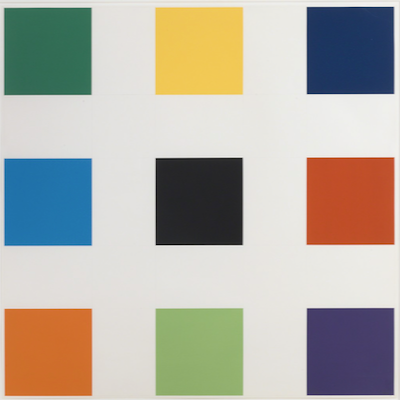
Details
Artist
Styles
from Album Xico // VY-29-C by Victor Vasarely, created in 1973, is a serigraph print that exemplifies the artist's fascination with optical art. The composition features geometric forms in shades of green, blue, and black, arranged in a symmetrical, grid-like structure that appears to shift and vibrate. The bold contrast between colors and the precise alignment of shapes create an illusion of three-dimensional cubes, drawing viewers into a seemingly infinite depth. Vasarely, a pioneer of Op Art, masterfully uses color and form to challenge perception, inviting viewers to explore the dynamic interplay between flatness and dimensionality. This piece, part of the Album Xico collection, reflects Vasarely's innovative approach to visual manipulation.
VY-29-C, 1973
form
Medium
Size
90 x 72 cm
- Inches
- Centimeters
Edition
Price
- USD
- EUR
- GBP
Details
Artist
Styles
from Album Xico // VY-29-C by Victor Vasarely, created in 1973, is a serigraph print that exemplifies the artist's fascination with optical art. The composition features geometric forms in shades of green, blue, and black, arranged in a symmetrical, grid-like structure that appears to shift and vibrate. The bold contrast between colors and the precise alignment of shapes create an illusion of three-dimensional cubes, drawing viewers into a seemingly infinite depth. Vasarely, a pioneer of Op Art, masterfully uses color and form to challenge perception, inviting viewers to explore the dynamic interplay between flatness and dimensionality. This piece, part of the Album Xico collection, reflects Vasarely's innovative approach to visual manipulation.
- Recently Added
- Price (low-high )
- Price (high-low )
- Year (low-high )
- Year (high-low )
What is Hard Edge Art?
Hard Edge art is a style of abstract painting that became popular in the 1960s. It features areas of color separated by crisp, sharp edges that are painted with geometric precision. The term hard-edge painting was coined by art critic Jules Langsner to describe this approach, which contrasts with the softer, more fluid forms of other abstract styles.






































































